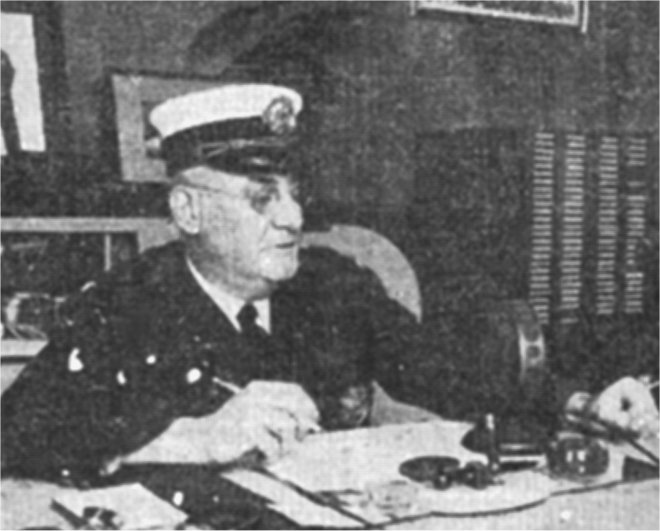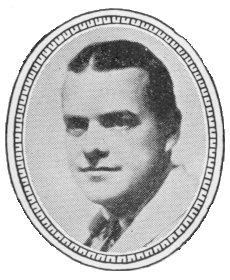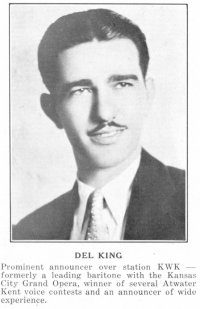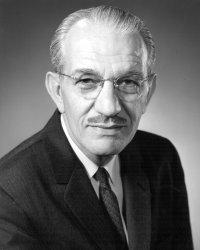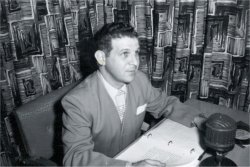Radio Articles
KMOX Was Shumates’ Last Stop
For the Shumate Brothers, it wasn’t a stage mother but a stage father who did all the pushing. The push moved them through the Chautauqua circuit to a radio station in Iowa and finally to KMOX. After consulting with a music professional, the elder Shumate decided saxophones were the key to his boys’ future. In 1922 you could find the four of them playing local dances around their home town of Forest City, Mo. Several years later, after their Chautauqua work took them through 40 states, an appearance offer came from radio station KMA in Shenandoah, Iowa. As 1928 came to an end the station manager there hired them.
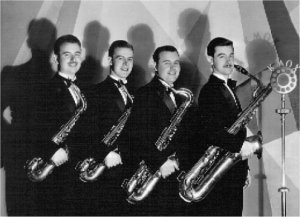
Radio in the ‘20s was still struggling to achieve its identity, looking for the right programs to attract an audience, so a regular musical act was valuable to any station. But being a radio star sometimes had its drawbacks. KMA was one of two major radio stations in Iowa owned by seed companies, in this case the May Seed Company, which used the station to promote its product throughout the Midwest. When musical talent signed on at the station, they were usually expected to work in the plant next door to the studios packaging seeds when they weren’t on the air. It was apparently an acceptable arrangement for the Shumate Brothers, who were on KMA for several years.
In 1931, they caught a break with an offer to join the KMOX music staff where their instrumental prowess and their singing and entertainment abilities made them a perfect fit for the local radio powerhouse.
At KMOX, there was no time for factory work. All four brothers were kept busy with other duties in addition to their musical on-air work.
Don, the eldest also played trombone with the station’s musical groups. Lewis was drafted into singing the theme song for the Uncle Remus Show and he played the character Ollie on the Country School Show. Paul wrote scripts and played Henry Spickelmeyer on Country School in addition to playing trumpet when needed in the bands. Ray, the youngest, also played trumpet and was the character Mickey on the Country School.
The group was known as “The Four Irishmen” on the Uncle Dick Slack show on KMOX and they were also called upon to sing 15 minutes’ worth of hymns each morning at 6:00 on the station.
Ray was also asked to join the 10-piece KMOX orchestra. In a 1998 interview, he told the St. Louis Review, “One day I played a solo, not on purpose, on the whole CBS Network. When everybody finished,” he said, “I was one note behind.
“Afterward the director looked around for the guilty, but nobody told on me. When I got into the group the fellows told me, ‘If you make a mistake, don’t look at the director,’ and I never did.”
The Shumates’ gig at KMOX was beneficial in one other way. Ray met his wife Marie there. She was a singer with the Harmonettes.
(Reprinted with permission of the St. Louis Journalism Review. Originally published 10/09)
By Meryl Friedel
Delving into the past of radio artists reveals that most of them reached their present high spots on the air firmament through lucky breaks or a series of them, or by hanging around until someone noticed them.
That’s usually the case, but the four gifted Shumate brothers were different, as they are different as entertainers. They were forced into radio against their will. Imagine anyone not wanting to be starred in radio! But that was in 1928, when successful stage artists were still a bit shy of this radio thing. And there were extenuating circumstances.
The boys had just come home (Forest City, Missouri) for Christmas vacation, and the day before Christmas, their booking office called and said they must go over to KMA immediately to broadcast that week. There was much objecting, cussing and discussing, but finally, like good troupers, they did as told, and they’ve been in radio ever since. They’ve been with KMOX for over six months.
Their radio success was inevitable, for rarely does one find four young men who are, each in his own right, such versatile entertainers. And more rarely, they are brothers, harmoniously and equally gifted.
Their first appearance in public as entertainers was while the three older brothers, Donald, Lewis and Paul, were in high school as leaders of the high school orchestra. After high school , with Raymond already developed into as talented a musician as his older brothers, the four boys, with two of them still wearing short pants, engaged for a vaudeville tour. That was nine years ago. From then to now, they’ve consistently been headline entertainers.
Donald, the oldest brother, plays both the saxophone and trombone. He is five feet ten inches tall, with blue eyes and dark brown hair, happily married and the father of two children.
Lewis, next oldest, plays sax and trombone. He is five feet eleven inches tall, with greenish gray eyes and black hair. He too is married and has one child.
Paul, third son of the proud Mr. and Mrs. Shumate – they should be proud with such unusually gifted sons – plays sax and trumpet and is very popular as the stuttering Henry Spickelmeyer. He is five feet ten inches tall, has green eyes and black hair and is also the father of one child.
Raymond, youngest of this talented quartet of brothers, also plays the sax and trumpet. He is five feet eleven inches tall, has blue eyes and brown hair and is the only unmarried one of the four.
All the boys sing, both individually and as a quartet, as KMOX listeners have found to their satisfaction. And besides their marvelous musical talents, these versatile brothers write and act comedy skits that have made them as famous for humorous programs as for their music.
Too bad there isn’t space to tell you more of these four who are still young enough to have a tremendous future ahead of them, although they are already veterans in the world of entertainment, are interesting people who have had an interesting career that makes one wish to go on and on about them.
(Originally published in Radio and Entertainment 8/6/1933).
